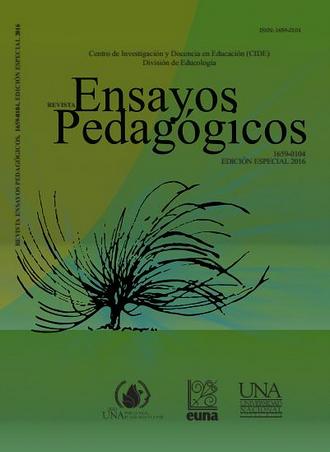Social Networks and their Mathematical Modeling
DOI:
https://doi.org/10.15359/rep.esp-16.1Keywords:
social networks, network analysis, mathematical models, graph theory, InternetAbstract
The information and communication technologies (ICT) have come to change the potential of social networks. Their diversity, scope and characteristics are creating a great impact on society, and their mathematical analysis is important to understand that. This chapter describes the basic concepts of networks; we will see how complex networks and their main characteristics are generated, especially small-world networks and their use to model social networks will be analyzed. Finally, some limitations with these mathematical models in the representation of social reality are described.
References
Barábasi, A.-L., y Bonabeau, E. (Mayo, 2003). Scale Free Networks. Scientific American, 60-69.
Bear, M. F., Connors, B. W., y A., P. M. (2001). Neuroscience. Exploring the Brain. Baltimor: Lippincott Williams & Wilkins.
Dorogovtsev, S. N., y Mendes, F. F. F. (2003). Evolution of Networks. From biological nets to the Internet and WWW. Oxford: Oxford Press.
Eames, K. T., y Keeling, M. J. (2002). Modeling dynamic and network heterogeneities in the spread of sexually transmitted diseases. Proceedings of the National Academy of Sciences of the United States of America, 99(20), 13330-13335.
Erdős, P., y Rényi, A. (1959). On Random Graphs. Publicationes Mathematicae, 6, 290-297.
Hanneman, R. A., y Riddle, M. (2005). Introduction to Social Networks. Recuperado de http://www.analytictech.com/networks.pdf
Kadushin, C. (2011). Understanding Social Networks: Theories, Concepts and Findings. New York: Oxford University Press.
Milgram, S. (1967). The Small-World problem. Psychology Today, 1 (1), 61-67.
Moreno, Jacob L. (1953). Who shall survive? Foundations of sociometry, group psychoterapy and sociodrama. New York: Beacon House. [Originalmente publicado como Moreno, Jacob L. (1934). Nervous and Mental Disease Monograph, vol. 58. Washington, D.C. ]
Newman, M. E. J. (2003). The Structure and Function of Complex Network. SIAM REVIEW, 45(2), 167-256.
Perra, N. (2015). Modeling and Studying Online Social Networks. Recuperado de http://www.nicolaperra.com/modeling-and-studying-online-social-networks.html
Reynolds, P. (1999). The Oracle of Bacon. Recuperado de https://oracleofbacon.orghttps://oracleofbacon.org/
Social Network Analysis. (2011). Theory and Applications. (pp. 116). Recuperado de http://train.ed.psu.edu/WFED-543/SocNet_TheoryApp.pdfhttp://train.ed.psu.edu/WFED-543/SocNet_TheoryApp.pdf
Solé, R., Corominas, B., Valverde, S., y Steels, L. (2010). Language Networks: Their structure, function and evolution. Complexity, 15(6), 20-26.
Wang, X. F., y Chen, G. (2003). Complex Networks: Small-World, Acale-Free and Beyond. IEEE Circuits and Systems Magazine, 2003 (1), 6-21.
Watts, D. J. (1999). Small worlds: the dynamics of networks between order and randomness. New Jersey: Princeton University Press.
Watts, D. J., y Strogatz, S. H. (1998). Collective dynamics of ‘small-world’ networks. Nature, 393, 440-442.
Downloads
Published
How to Cite
Issue
Section
License
Ensayos Pedagógicos is subscribed to the Attribution-NonCommertial-NoDerivatives 4.0 International Creative Commons Licence, which allows both authors and readers to freely download, store, copy, and distribute the final approved publisehd version of the manuscript (post-print) as long as this is done without commercial purposes, no derivative works are generated, and the source and author are mentioned. As well, Ensayos Pedagógicos declares that authors will remain the rightful owners of the copyrights of their work in perpetuity.







